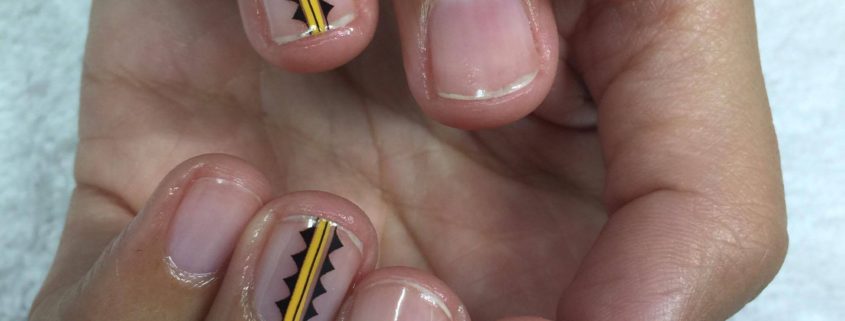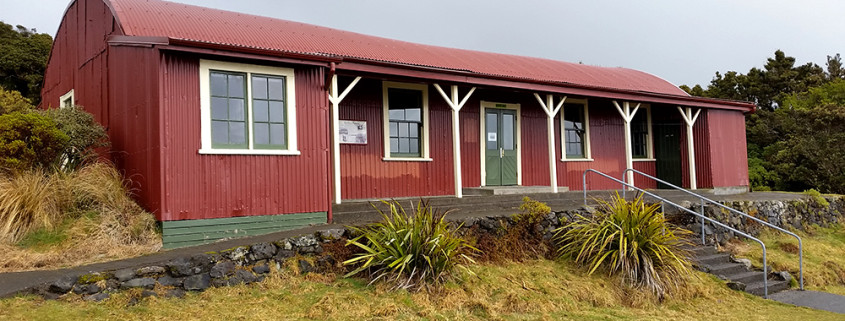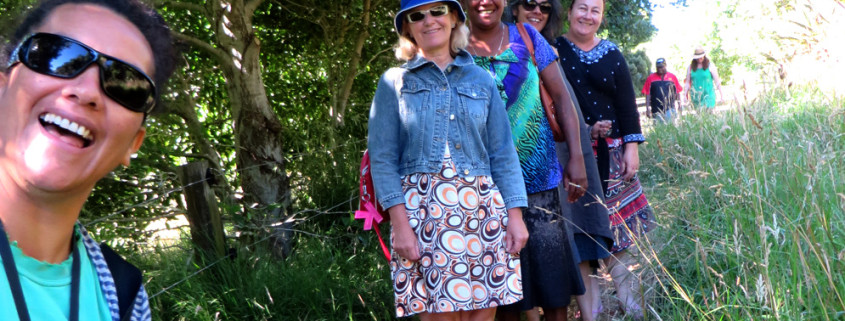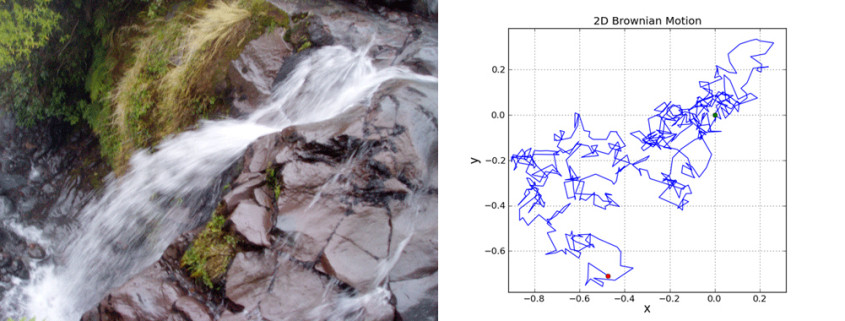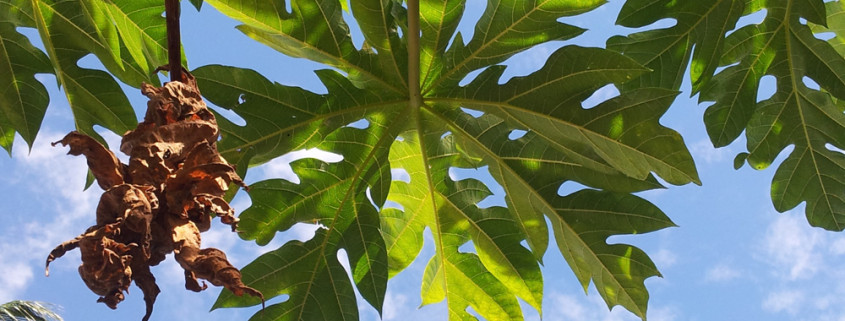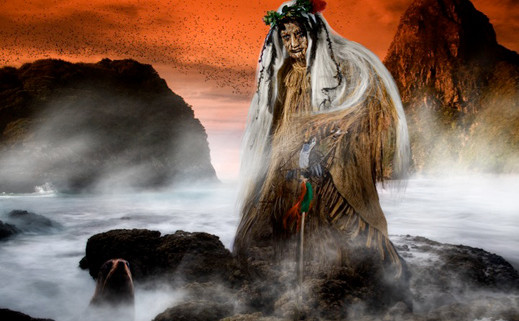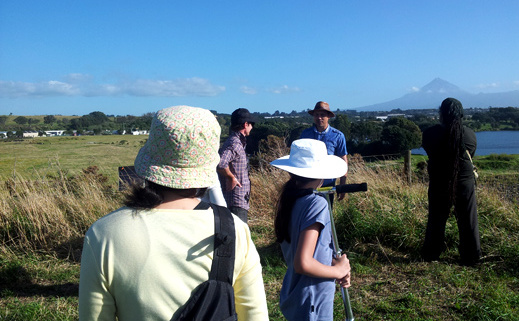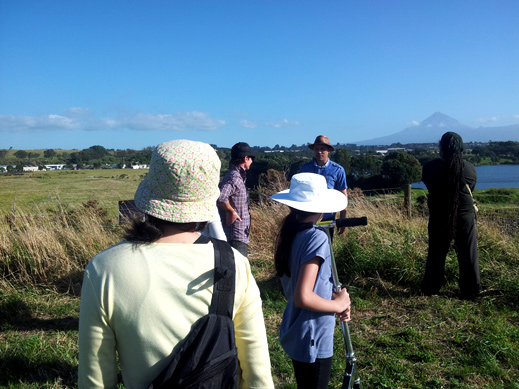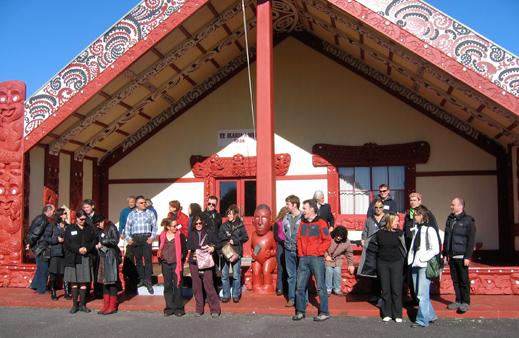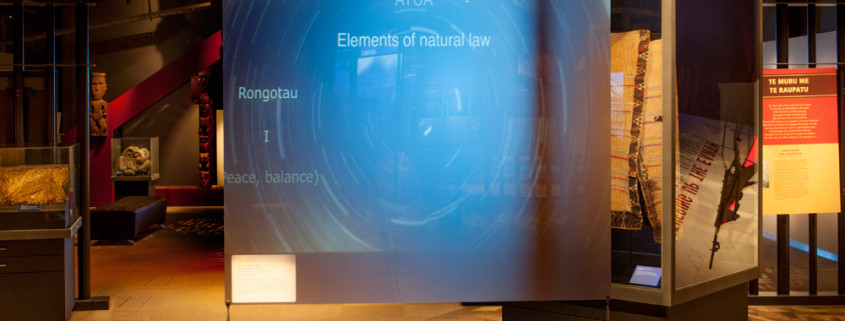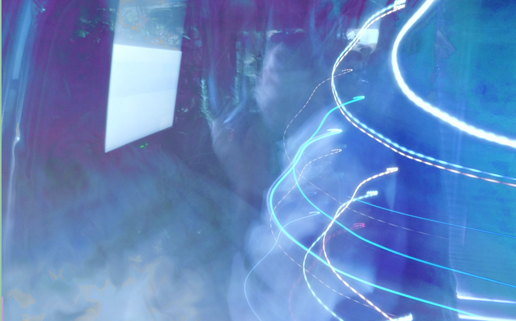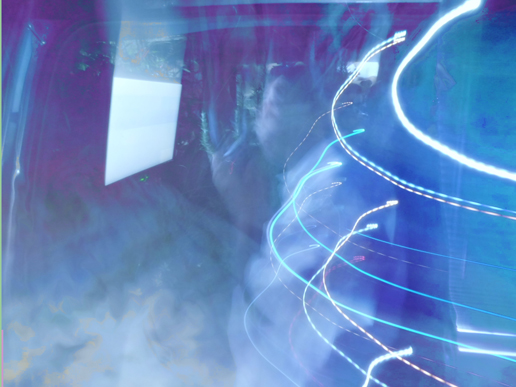Posts
Water, Peace, Power Hui Venue
/in Context, Wai = water, flow, Water, Peace, Power 2016, WPP 2016 Hui symposium /by Ian ClothierKo Tatou te Tangata: talk
/in Media Art Projects /by Ian ClothierAs part of Intercreate’s Media Art Project Ko Tatou te Tangata a series of meetings and discussions with local iwi Ngati Tawhirikura were held, co-ordinated by Kura Puke and Stu Foster. One of the consequences of these discussion was that local historian and Puke Ariki Poutiaki Taonga Glen Skipper gave a talk about Te Rewa Rewa pa, at the pa site. One aim of the Media Art Project is to direct a laser from Katere Ki Te Moana marae to Te Rewa Rewa pa. The laser will carry audio contributed by local tangata whenua (people of the land, as Maori refer to themselves). The pa, now uninhabited, is a large site on the New Plymouth foreshore.
The two sites are connected by whakapapa (genealogy) people and history. Where once there was large settlement at Te Rewa Rewa, now the closest marae is Katere, which is several kilometres away. To direct laser light across the whenua (land), through the night sky carrying traditional knowledge and awareness is to re-awaken connection to place, and the project has facilitated this process greatly.
When standing on Te Rewa Rewa, the look and feel is that of farmed land, with a large open flat space at a good height for local visibility and indeed the land is leased to a farmer presently. Pieces of history are everywhere, with small entrances to mid 20th century structures, and pits in the flat plateau. The story of this land, its people, events, the politics, intrigue, comings and goings rise from hidden earth as Skipper takes us further into this place and it’s surrounds. Here, buried from everyday consciousness and awakened by the project are the many energies that constitute the living past, the veil having been lifted in the most delicate way by the efforts of Puke and Foster.
SCANZ-Balance-Unbalance
/in Other projects /by Ian ClothierThe photo above is of the gathered participants at the first SCANZ – just after the powhiri at Owae Marae in 2006. Nina Czegledy, Trudy Lane and Ian Clothier will present on SCANZ 2006, 2009, 2011 and 2013 at Balance-Unbalance.
As part of our Balance-Unbalance presentation on Solar Circuit Aotearoa New Zealand, where we will discuss issues around engaging with science and indigenous peoples, we are wanting to subvert the usual arrangements for presentation.
We would like the audience to download our presentation images to their mobile device. We will then not require the use of a projector with it’s directional emphasis, will be able to sit in a circle, and we will also be able to leave the room and go for a short walk all as part of our presentation.
This emphasis on the physicality of experience, of interrogating the frameworks for activity, and taking alternate approaches all arise from the experience of producing SCANZ in 2006, 2009, 2011 and 2013.
Download the pdf for your mobile device by clicking the link scanzAllweb02
3rd nature art works
/in 2013 Exhibition, SCANZ 2013: 3rd nature /by Ian ClothierCurated by Ian Clothier, the works in SCANZ 2013 3rd nature exhibition spiral from the Puke Ariki Museum gallery Te Takapou Whāriki o Taranaki (The Sacred Woven Mat of Taranaki) out onto level 2 and around the natural history and geology galleries, down the stairs on to the landing and beyond into Pukekura Park botanic garden.
Being Light
/in Car Garden, Other projects, Wai /by Ian ClothierBeing Light: a festival of light and ideas explores ideas about light across Maori, Navajo, Mayan, Pueblo and Western European culture. The festival has two parts, activities in the day with stalls and market; while in the night there are outdoor projections on the side of buildings. Attendance is free.
We live in a time where there is great interest in bringing together indigenous and Western cultures, art, science and technology. Currently involved are: Patricio Dominguez, Ian Clothier, Mike Andrews, Mike Sutherland, Issa Malluf, Agnes Chavez, Tom Greenbaum, Jamila Colozzi, Courtni Hale, Glenn Parry, Enrique Hynes, Julia Pyatt, Sandra Wasko-Flood and Susan Caffrey.
Te Huirangi Waikerepuru, Te Urutahi Waikerepuru (of Aotearoa New Zealand), Will Wilson and Richard Lowenstein have expressed interest. We are in contact with Santa Clara Pueblo and have invited Mayan participation.
At night, artworks are projected onto the exterior of buildings. The projections consist of a programmed selection of:
• projection works by leading artists
• visualization of energy data from humans
• audio works and music themed on light
• sculptures that use light are installed outdoors at night
During the day, the festival includes
• the creation of an energy labyrinth as a participatory art work in both construction and then walking the labyrinth. Activities include instructions on how to turn your phone into an electromagnetic field reader
• videos where shamans and senior representatives of cultural groups are paired with video students, to make short videos that reflect beliefs about light
• solar powered art works
• visualizations and sonifications of light energy
• activities and market stalls themed on light and sun in the day time
• sunflower painting for children; knowledge sharing of indigenous knowledge about growing sunflowers
• stories of the sun and the power of the sun
• solar powered objects and artefacts
• scientific stalls that express the Western science view of light – wave particle duality
• information stands expressing cultural viewpoints on light
• music themed on light
Intercreate.org is proudly powered by WordPress

